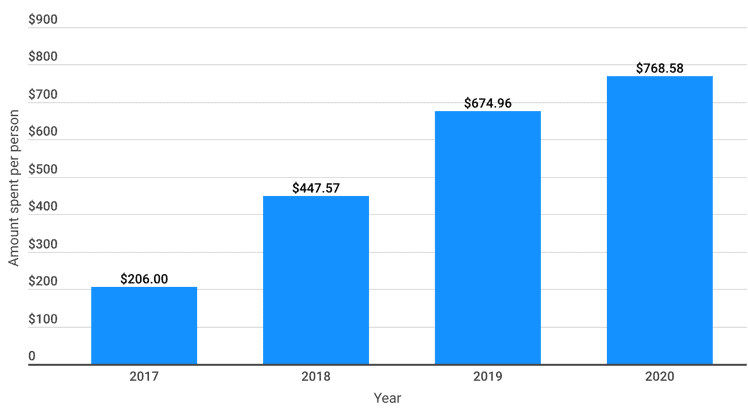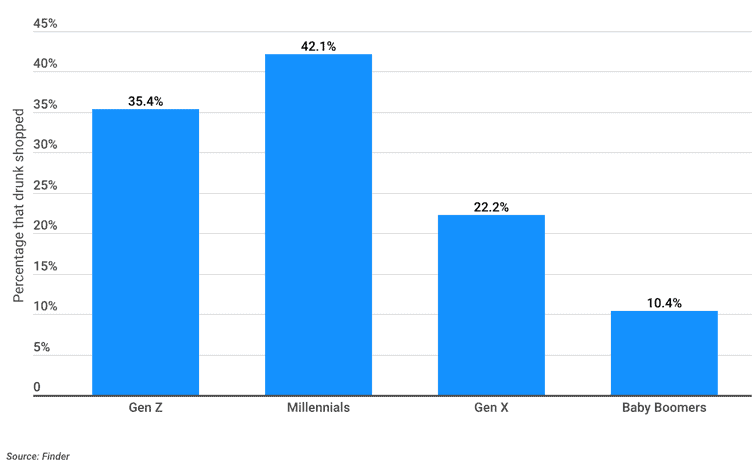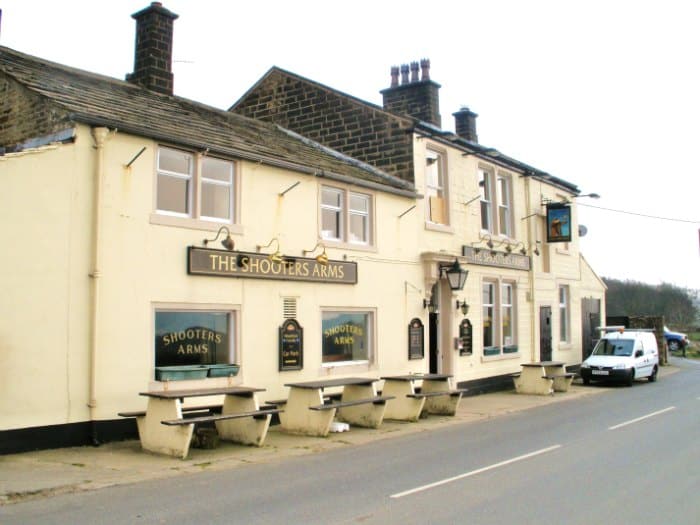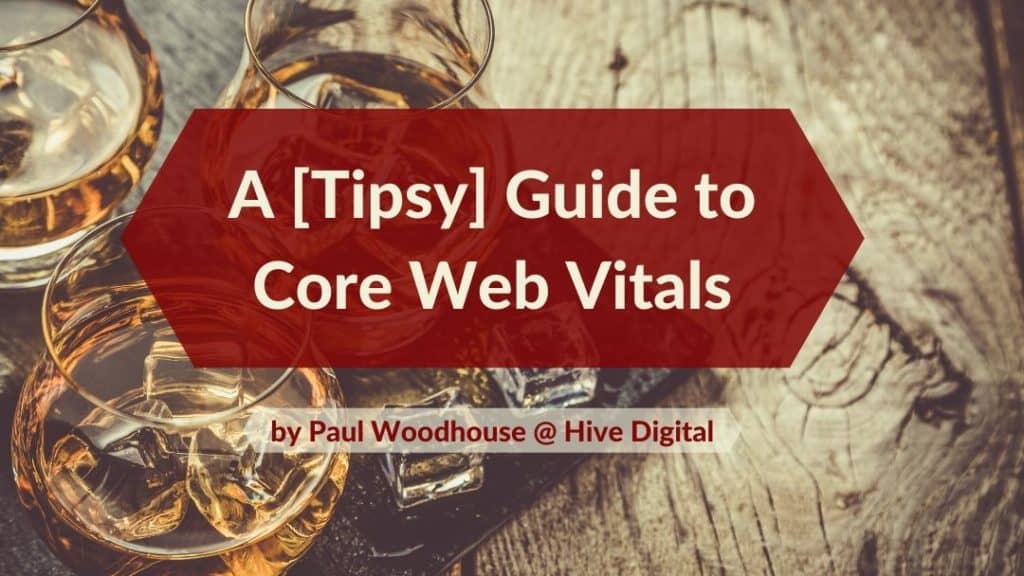In 2019, 7.7% ($45B) of all e-commerce spending ($586B) could be attributed to ‘drunk shopping’. With that expecting to increase in 2020, it would seem wise to ensure your site’s performance is up to scratch for drunk and sober alike. Thankfully, Google have been on something as they’ve recently announced performance and UX signals will be integrated into their ranking algorithm circa 2021. Core Web Vitals brings with it some new terminology that may have you reaching for the cooking sherry as you try to get buy-in from the higher-ups. Of course, we now have the tried and trusted fallback of it being ‘good for SEO’, but let’s hit on the high-level basics in a way that even the most sozzled amongst us should be able to grasp.
Digital marketing (and SEO in particular) has an exceptional knack of keeping folks suspended between the next trending shiny object and gobbledygook.
Hurtling back in time to 2017 sees CIO.com telling us the four most in-demand e-commerce skills to help companies differentiate themselves include:
- Software Development
- SEO
- Data Analytics
- Artificial Intelligence
God help us if CIOs haven’t worked out you need somebody to tweak the e-comm site, a way to get potential customers there, then measuring what users do on the site. Put a bow on it with the buzzword du jour and you’re guaranteed at least two minutes extra meeting time.
But, those are your basics. The latest secret sauce of e-commerce domination is getting your customers on the sauce.
Yes, ladies and gentlemen: we’re talking booze.
Honestly, find a way to get your customers liquored up and you too can share in the phenomena commonly referred to as ‘drunk shopping’ worth an estimated $45 billion a year.
What wouldn’t you give for incremental growth in average order value that looked like this?

Source: Finder.com
And it’s mainly millennials and Gen Z:

But, if we look at the actual boozing stats, you could be forgiven for thinking Boomers are possibly better at holding their liquor:
- 69.7% of Americans drink at least one alcoholic beverage per week
- On average, American drinkers consume 8 alcoholic drinks per week
- The most commonly consumed alcoholic beverage by men is beer, with 63.7% of men drinking at least one beer a week, compared to women who tend to favor wine, with 46.2% of women having at least one glass per week
- Millennials and Gen X are consuming the largest amount of alcoholic beverages weekly, both consuming an average of 8.85 drinks per week
- Americans on average spend the most per glass of wine ($11.86) and the least on a can of beer ($7.57)
Now, I’m not about to get my Buzzfeed on and regale you with 17 ways to turn customers into alcoholics (although, #7 is genuinely lit).
What I am going to suggest is optimizing your site so that it’s a cinch for a common or garden drunk to use.
It’s obvious a certain amount of lubrication reduces the friction to make a purchase in the first place, but how much effort are they expected to put into clicking off interstitials with their inebriated thumbs, waiting for pages to load and struggling to find your ‘add to cart’ button before passing out, face-down on their keyboard?
Call me old-fashioned, but by that point, you may have lost the sale.
This is where Core Web Vitals – Google’s latest effort in packaging site performance and usability – becomes somewhat useful.
SEO has a tendency to tout performance and on-page conversion optimizations as an added bonus. Even though these vital enhancements didn’t officially impact SEO performance by means of ranking signals incorporated into Google’s algorithm, driving more conversions or revenue always seems to be appreciated.
Read Tripp’s post about the nitty-gritty of Core Web Vitals here, but know that sometime in 2021 Google will flick a switch and sites will see a rankings boost (or demotion) dependent on how well their vital signs are tracking.

Back in Blighty, I had a spell running pubs and bars. I remember fondly how you were more likely to end up in the hospital from accidentally spilling someone’s pint as opposed to coughing somewhere near it.
While we’re on the subject of mercilessly beating a subject for no apparent reason, allow me to painfully explain the three key cornerstones of Core Web Vitals via the medium of the public house:

GOOGLE DEFINITION: Largest Contentful Paint (LCP): measures loading performance. To provide a good user experience, LCP should occur within 2.5 seconds of when the page first starts loading.
LAME PUB ANALOGY: Imagine walking into a bar and there’s nobody behind it. How long do you wait, and at what point do you render yourself hoarse from an abundance of polite coughing?
TAKEAWAY: Don’t make people wait.
GOOGLE DEFINITION: First Input Delay (FID): measures interactivity. To provide a good user experience, pages should have an FID of less than 100 milliseconds.
LAME PUB ANALOGY: It’s a busy Saturday and almost impossible to get a pint due to it being seven deep and there not being enough bar staff. It’s probably going to be a good night, but do you bail and go somewhere else if it continues to be a pain getting served?
TAKEAWAY: Serve people quickly.
GOOGLE DEFINITION: Cumulative Layout Shift (CLS): measures visual stability. To provide a good user experience, pages should maintain a CLS of less than 0.1.
LAME PUB ANALOGY: It’s New Year’s Eve and you’re playing a massive game of sardines. Never mind getting served, you’re barely able to make it through the door, the toilet, or anywhere as you are swept up by a slow-moving school of tipsy punters obfuscating your view of the bar with random streamers, party poppers and hats they insist on you modeling.
TAKEAWAY: Beware distractions and obstructing people from getting served.
Essentially, there’s considerable overlap between the three tenets of Core Web Vitals. It’s about serving a patron of page or pub as quickly and efficiently as you can. The main difference is Google rewarding those sites with additional organic traffic from improved rankings BECAUSE THEY CAN HANDLE IT.
You know, like you should only allow those who can handle their booze to imbibe more.










